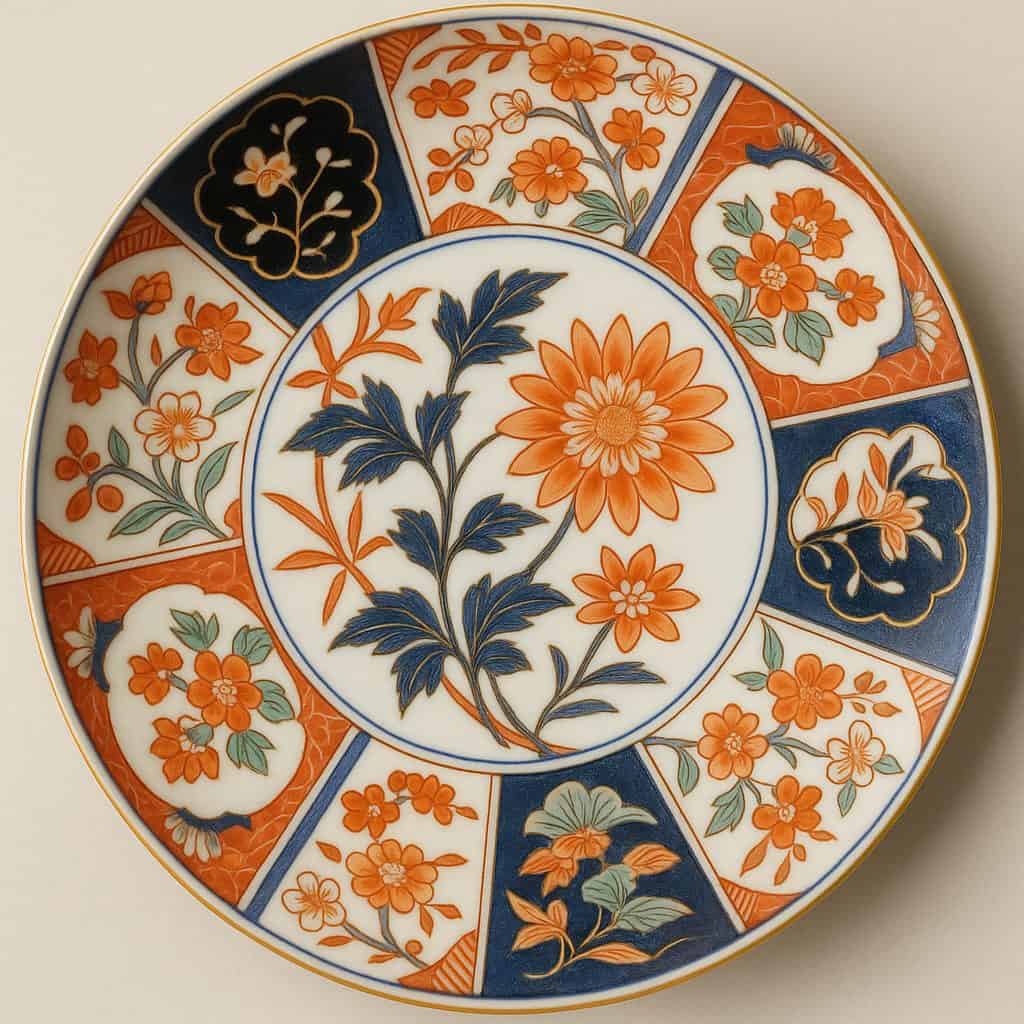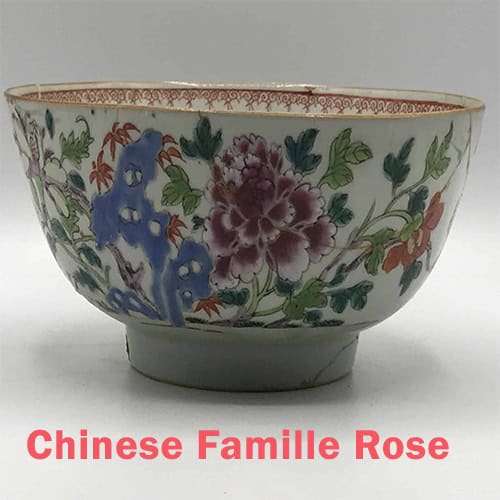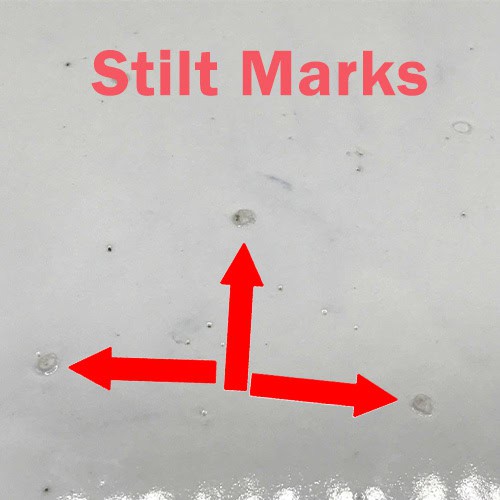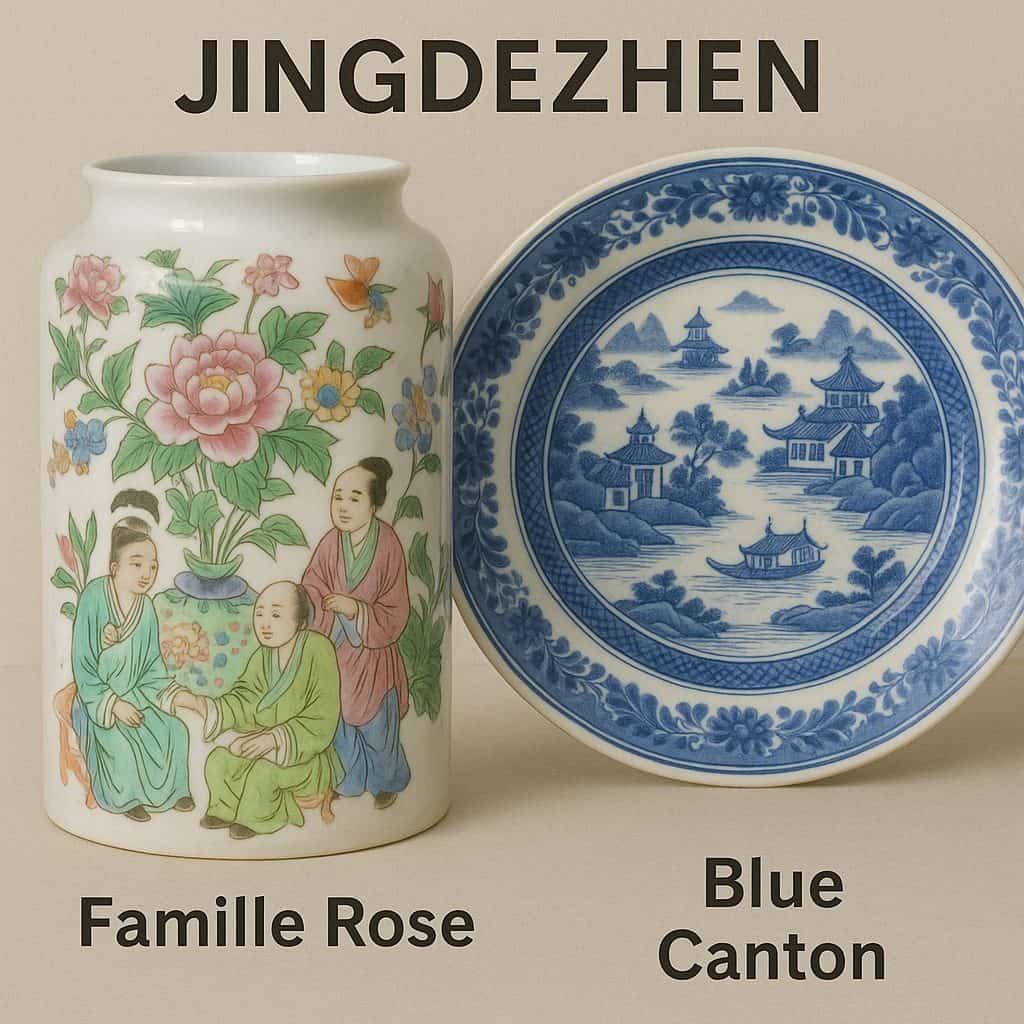READ MORE ABOUT ANTIQUES
How to Tell the Difference Between Chinese and Japanese Porcelain (1700s to 1900s)

Chinese vs. Japanese porcelain can be difficult to tell apart, especially when both cultures shared techniques and aesthetics for over 300 years. However, there are reliable visual, physical, and historical clues that allow collectors, antique dealers, and historians to accurately identify the origin of a porcelain piece. This guide covers all major distinguishing features from the 18th to 20th centuries to help you spot the difference with confidence.
1. Decoration Style and Motifs
- Chinese porcelain often features symmetrical, narrative scenes with dragons, phoenixes, floral scrolls, scholars, or auspicious symbols (e.g. bats, peaches).
- Japanese porcelain typically uses asymmetrical designs, stylized flora like chrysanthemums and plum blossoms, and radial panel compositions in Imari ware.
- Chinese figures usually have eyes painted as dots; Japanese figures often have lines or dashes for eyes.
- Japanese artists sometimes outlined motifs in black enamel; Chinese typically used iron-red or cobalt blue.
Google Snippet Opportunity: “Chinese porcelain uses symmetrical and symbolic motifs, while Japanese porcelain favors asymmetry and panel-style decoration.”
2. Color Palette and Glaze
- Chinese porcelain (esp. Famille Rose) uses soft pinks, pastels, and finely blended enamel shading.
- Japanese Imari ware is known for its bold palette: underglaze blue, iron-red, and lavish gilding.
- Japanese Kakiemon style uses fewer colors, applied sparsely on milky-white backgrounds.
- Chinese glaze is smooth, glassy, often slightly bluish; Japanese glaze may show pinholes, orange-peel texture, or slight off-white tones.
Google Snippet Opportunity: “Famille Rose Chinese porcelain features soft pastels and pinks, while Japanese Imari uses vivid red, cobalt blue, and gold.”
3. Shape and Form
- Chinese export shapes include temple jars, meiping vases, shallow dishes with wide rims, and fine teapots.
- Japanese porcelain includes flatter plates, scalloped rims, sake bottles, incense burners, and molded novelty shapes.
- Chinese pieces are usually thinner and more delicate; Japanese pieces tend to be thicker and heavier.
Tip: If the form is thick, robust, and highly decorated, especially with panel patterns, it’s likely Japanese.
4. Base and Foot Rim
- Chinese foot rims are often unglazed and show kiln grit or slight beveling. No stilt marks are typically present.
- Japanese porcelain is often fully glazed on the base and shows stilt marks (usually three small pinpricks).
- Arita ware (Japan) often shows concentric wheel marks on the base.
Google Snippet Opportunity: “Chinese porcelain bases often have unglazed foot rims with kiln grit. Japanese porcelain usually has stilt marks from firing.”
5. Marks and Signatures
- Chinese marks: reign marks in underglaze blue, often apocryphal. Post-1891 pieces marked “CHINA” or “Made in China.”
- Japanese marks: Kanji characters, artist names, or English marks like “Nippon” (1891–1921) and “Japan” or “Made in Japan” (post-1921).
- Japanese Meiji-period marks often start with “Dai Nippon” followed by the kiln name.
Snippet Tip: Look for “Nippon” or stilt marks to confirm Japanese origin.
6. Materials and Paste
- Chinese porcelain is made from kaolin and porcelain stone; extremely white, smooth, and translucent.
- Japanese porcelain (e.g. Arita) may show small black specks or warmer paste tones due to iron in the clay.
- Chinese paste is glassy and uniform; Japanese paste may look slightly more granular or warm.
7. Firing Techniques
- Chinese kilns used large dragon kilns; items were fired on bare foot rims (no stilts).
- Japanese kilns used noborigama climbing kilns; most wares were fired on stilts, leaving visible marks.
Quick Clue: Stilt marks = Japanese. Kiln grit and unglazed foot = Chinese.
8. Export Patterns and Western Influence
- Chinese export porcelain: Famille Rose (Rose Medallion), Blue Canton, armorial services.
- Japanese export porcelain: Imari (bold colors), Kutani (multi-colored), Satsuma (cream crackle glaze, heavy gilt).
- From 1891: “CHINA” and “NIPPON” used to meet U.S. import laws. Post-1921: “Made in China” or “Made in Japan.”
SEO Tip: Mention Rose Medallion (Chinese) and Imari or Satsuma (Japanese) often—they are highly searched terms.
9. Regional Styles
- China: Jingdezhen made the majority of porcelain. Famille Rose and Blue Canton came from Jingdezhen and were often decorated in Canton.
- Japan: Arita (Imari, Kakiemon), Kutani, Hirado (pure white), and Satsuma (gilded earthenware).
Tip: Kutani uses strong greens, purples, and yellows. Kakiemon has lots of white space and sparse colors.
10. Dating Clues (1700s–1900s)
Chinese:
- Pre-1891: no Western mark.
- 1891–1919: “CHINA” stamped.
- 1920+: “Made in China.”
- Fine famille rose and Kangxi-style blue and white point to earlier dates.
Japanese:
- Pre-1891: unmarked or kanji only.
- 1891–1921: “Nippon.”
- 1921–1940s: “Japan” or “Made in Japan.”
- Meiji period: elaborate enamel, gold-heavy, sometimes marked “Dai Nippon.”
Quick Test: If it says “Nippon,” it’s Japanese and made between 1891–1921.
Final Checklist to Identify Chinese vs. Japanese Porcelain
| Feature | Chinese | Japanese |
|---|---|---|
| Symmetry | Yes | Often asymmetrical |
| Color Palette | Softer pastels (famille rose) | Bold red/blue/gold (Imari) |
| Foot Rim | Unglazed with kiln grit | Glazed with stilt marks |
| Marks | Reign marks, “CHINA” | “Nippon”, kanji, “Made in Japan” |
| Weight | Thin and refined | Heavier and thicker |
| Glaze | Smooth, bright | Sometimes pinholed or warm-toned |
| Common Forms | Temple jars, famille rose vases | Flat dishes, sake bottles, koro |
| Popular Exports | Rose Medallion, Blue Canton | Imari, Kutani, Satsuma |
Conclusion
By closely examining the decoration, glaze, base, markings, and form, you can often confidently identify whether a porcelain piece is Chinese or Japanese. Understanding these differences not only aids collectors and dealers but also preserves cultural appreciation for two of the world’s greatest ceramic traditions.
Suggested Meta Description (for SEO): Learn how to tell the difference between Chinese and Japanese porcelain with this expert guide. Covers 300 years of styles, marks, glazes, and export history.
Hashtags (for YouTube/Blog): #ChinesePorcelain #JapanesePorcelain #AntiquePorcelain #Imari #FamilleRose #HowToIdentify
Want help identifying your piece? Leave a comment or watch our companion video for visual comparisons and examples!

Table of Contents















